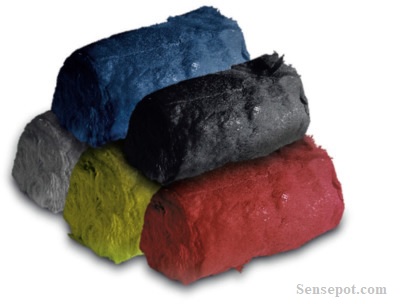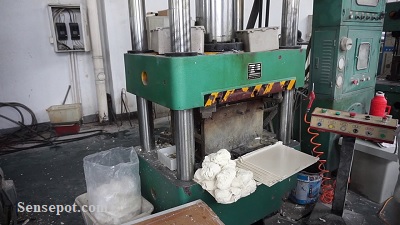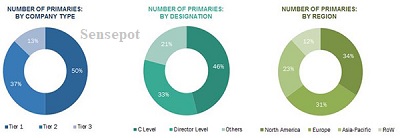Sheet Molding Compound (SMC) and Bulk Molding Compound (BMC) are composite materials widely used in various industries due to their exceptional properties and versatility. These materials offer significant advantages over traditional materials, such as metals and thermoplastics, making them increasingly popular in the manufacturing sector. This article explores the market projections for SMC and BMC, highlighting their resilience and growth potential during the year 2025.

The composite materials industry has witnessed significant growth in recent years, and SMC and BMC have emerged as key players in this sector. These materials offer excellent mechanical properties, chemical resistance, and electrical insulation, making them ideal for a wide range of applications across industries.
Overview of Sheet Molding Compound (SMC)
SMC is a composite material composed of chopped glass fibers, polyester resin, fillers, and additives. It is manufactured through a compression molding process, resulting in a highly versatile and strong material. SMC is known for its exceptional strength-to-weight ratio, corrosion resistance, and dimensional stability.
Applications of Sheet Molding Compound
SMC finds extensive use in various industries, including automotive, aerospace, electrical, and construction. It is commonly employed in the manufacturing of automotive body panels, electrical enclosures, structural components, and sanitary ware. The lightweight and durability of SMC make it an excellent choice for applications that require strength and performance.
Advantages of Sheet Molding Compound
- High strength and stiffness
- Excellent corrosion resistance
- Good electrical insulation properties
- Design flexibility and complex geometry capabilities
- Reduced tooling costs compared to metal fabrication
- Enhanced dimensional stability
Overview of Bulk Molding Compound (BMC)
BMC is another composite material comprising short fibers, resin, fillers, and additives. It is manufactured using a thermosetting process, resulting in a highly moldable material with excellent flow characteristics. BMC offers exceptional surface finish, precise molding, and intricate design capabilities.
Applications of Bulk Molding Compound
BMC is extensively used in electrical and electronics applications, such as electrical switches, connectors, insulators, and motor components. Its excellent dielectric properties, heat resistance, and flame retardancy make it a preferred choice in these industries. Additionally, BMC is also utilized in the automotive, consumer goods, and telecommunications sectors.

Advantages of Bulk Molding Compound
- Superior dimensional stability
- Excellent electrical insulation properties
- Flame retardancy
- Good chemical resistance
- High heat resistance
- Complex and intricate molding capabilities
Market Analysis and Growth Projections for SMC and BMC
The market for SMC and BMC is expected to witness resilient growth during 2025. The increasing demand for lightweight and durable materials, coupled with the growing emphasis on sustainability, drives the market’s expansion. Industries such as automotive, aerospace, electrical, and construction are key contributors to the rising demand for SMC and BMC.
You can also get High-Quality Remodeling Services by Bear Builder {2023}
Key Factors Driving Market Growth
- Rising need for lightweight materials in the automotive sector to improve fuel efficiency
- Growing demand for electrical and electronics products with enhanced performance and safety features
- Increasing adoption of sustainable and eco-friendly materials
- Technological advancements in manufacturing processes, resulting in improved material properties and reduced costs
Market Challenges and Potential Limitations
- The high initial investment in production facilities and equipment
- Limited awareness and knowledge about the benefits of SMC and BMC
- Availability of alternative materials in the market
- Stringent regulatory requirements and standards
Competitive Landscape
The SMC and BMC market is highly competitive, with several key players dominating the industry. These companies focus on research and development activities to introduce innovative products and expand their market presence. Collaborations, mergers, and acquisitions are common strategies employed by companies to strengthen their market position.
Regional Analysis
The market for SMC and BMC is geographically diverse, with significant growth observed in North America, Europe, and Asia Pacific. North America is expected to dominate the market due to the presence of established industries and a strong emphasis on technological advancements. Asia Pacific is anticipated to witness substantial growth due to rapid industrialization and infrastructure development in emerging economies.
Future Opportunities and Trends
- Increasing adoption of SMC and BMC in renewable energy sectors, such as wind turbines and solar panels
- Advancements in material formulations to enhance specific properties, such as flame retardancy and conductivity
- Growing focus on recycling and reuse of composite materials to address sustainability concerns
- Integration of smart technologies in composite manufacturing processes for improved efficiency and quality control
Conclusion
SMC and BMC offer remarkable opportunities for various industries seeking lightweight, durable, and high-performance materials. The market for SMC and BMC is projected to exhibit resilience and growth throughout 2025, driven by factors such as increased demand for lightweight materials, technological advancements, and the need for sustainable solutions.
FAQs
Q1. What is the difference between SMC and BMC?
SMC and BMC are both composite materials, but they differ in their manufacturing processes and applications. SMC is manufactured through compression molding and is commonly used in the automotive and construction industries. BMC is produced using a thermosetting process and finds extensive use in electrical and electronics applications.
Q2. What are the advantages of using SMC and BMC?
Some of the advantages of SMC and BMC include high strength, corrosion resistance, electrical insulation properties, design flexibility, reduced tooling costs, dimensional stability, and excellent molding capabilities.
Q3. Which industries use SMC and BMC?
SMC and BMC are utilized in various industries, including automotive, aerospace, electrical, construction, consumer goods, and telecommunications. They are employed in the manufacturing of body panels, structural components, electrical enclosures, switches, connectors, insulators, and more.
Q4. What factors are driving the growth of the SMC and BMC markets?
The growth of the SMC and BMC market is driven by factors such as the need for lightweight materials in the automotive sector, the demand for enhanced electrical and electronics products, the adoption of sustainable materials, and advancements in manufacturing processes.
Q5. Which regions are witnessing significant growth in the SMC and BMC markets?
North America, Europe, and Asia Pacific are experiencing significant growth in the SMC and BMC markets. North America leads due to established industries and technological advancements, while Asia Pacific is witnessing growth due to rapid industrialization and infrastructure development.



